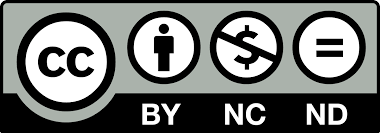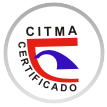EVALUACIÓN IN VITRO DE LA CITOTOXICIDAD, ACTIVIDAD ANTIOXIDANTE Y ANTIMICROBIANA DEL SUSTRATO AGOTADO DEL HONGO Pleurotus
Palabras clave:
salud animal; Pleurotus ostreatus; sustrato agotado; actividad antioxidante; antimicrobiana.Resumen
Translator
La actividad biológica del sustrato remanente del hongo Pleurotus cultivado sobre pulpa de café ha sido poco explorada. Esta investigación evaluó la citotoxicidad in vitro y los efectos antioxidantes/antimicrobianos de un extracto acuoso (RTA) obtenido del sustrato agotado de P. ostreatus cultivado sobre pulpa de café en Cuba. La citotoxicidad se estudió en la línea celular J774; para la actividad antioxidante se determinó el contenido de fenoles/flavonoides totales, el secuestro del radical DPPH y el poder reductor; y la antimicrobiana se realizó por el método de difusión en disco. No se observaron cambios en la viabilidad celular. Los fenoles y flavonoides totales fueron de 79,5 mg GAE/100 g y 48,6 mg QE/100 g, respectivamente; mientras que la captación del radical DPPH fue de 18,94 %, y el poder reductor de 0,11 unidades de absorbancia. El extracto RTA mostró actividad antimicrobiana contra Bacillus subtilis y Bacillus cereus. Los resultados demuestran las potencialidades del sustrato remanente de Pleurotus para aplicaciones como aditivo antioxidante/antimicrobiano en alimentos y productos para la salud animal.
Citas
MAYIRNAO, H. S. et al. “Mushroom-derived
nutraceuticals in the 21st century: an appraisal and
future perspectives”. J of Future Foods. 2025, 5-4,
-360 https://doi.org/10.1016/jfutfo.2024.07.013
NIAZI, A. R.; GHAFOOR, A. “Different ways to
exploit mushrooms: A Review”. All Life. 2021, 14,
-460.
https://doi.org/10.1080/26895293.2021.1919570
AFSAR, M. et al. “A multifaceted analysis of spent
mushroom substrate of selected oyster mushrooms for
enzymatic activity, proximate composition, and
antimicrobial activity”. Italian Journal of Food
Science. 2024, 36 (1), 165-174.
https://doi.org/10.15586/ijfs.v36i1.2457
ARSHADI, N.; NOURI, H.; MOGHIMI, H.
“Increasing the production of the bioactive
compounds in medicinal mushrooms: an omics
perspective”. Microbial Cell Factories. 2023, 22 (1),
-34. https://doi.org/10.1186/s12934-022-02013-x
SÁNCHEZ, J. E.; ROYSE, D. J. La biología, el
cultivo y las propiedades nutricionales y medicinales
de las setas Pleurotus spp. San Cristóbal de las Casas,
Chiapas, México: El Colegio de la Frontera Sur, 2017.
(ISBN: 978-607-8429-47-9).
MELANOURI, E. M.; DEDOUSI, M.;
DIAMANTOPOULOU, P. “Cultivating Pleurotus
ostreatus and Pleurotus eryngii mushroom strains on
agro-industrial residues in solid-state fermentation.
Part I: screening for growth, endoglucanase, laccase
and biomass production in the colonization
phase”. Carbon Resources Conversion. 2022, 5, 61-
https://doi.org/10.1016/j.crcon.2021.12.004
GOMES-CORRÊA, R. C. et al. “Biotechnological,
nutritional and therapeutic uses of Pleurotus spp.
(Oyster mushroom) related with its chemical
composition: a review on the past decade findings”.
Trends in Food Science and Technology. 2016, 50,
-117. https://doi.org/10.1016/j.tifs.2016.01.012
LLAURADÓ, G. et al. “Haematopoiesis
radioprotection in Balb/c mice by an aqueous
mycelium extract from the Basidiomycete Pleurotus
ostreatus mushroom”. Natural Product Research.
, 29(16), 1557-1561.
https://doi.org/10.1080/14786419.2014.983918
GUO, J.; ZHANG, M.; FANG, Z. “Valorization of
mushroom by-products: a review”. Journal of
Science of Food and Agriculture. 2022, 102(13),
-5605. https://doi.org/10.1002/jsfa.11946
LEONG, Y. K. et al. “Recent advances and future
directions on the valorization of spent mushroom
substrate (SMS): a review”. Bioresource Technology.
344, 126157.
https://doi.org/10.1016/j.biortech.2022.128012
ZIED, D. C. et al. “Use of Spent Mushroom
Substrate in New Mushroom Crops to Promote the
Transition towards A Circular Economy”. Agronomy.
, 10, 1239;
http://doi.org/10.3390/agronomy10091239
ANTUNES, F. et al. “Valorization of mushroom
by-products as a source of value-added compounds
and potential applications”. Molecules. 2020, 25,
https://doi.org/10.3390/molecules25112672
CATAL, S.; PEKSEN, A. “Physical, chemical and
biological properties of spent mushroom substrates of
different mushroom species”. Acta Horticulturae.
, 1287, 353-360.
https://doi.org/10.17660/ActaHortic.2020.1287.45
MA, X.; YAN, S.; WANG, M. “Spent mushroom
substrate: A review on present and future of green
applications”. Journal of Environmental Management.
, 373, 123970
https://doi.org/10.1016/j.jenvman.2024.123970
MORRIS, H. J. et al. “Mycelia from Pleurotus sp.
(oyster mushroom): a new wave of antimicrobials,
anticancer and antioxidant bio-ingredients”.
International Journal of Phytocosmetics and Natural
Ingredients. 2017, 4, 03,
https://doi.org/10.15171/ijpni.2017.03
MORRIS, H. J. et al. “Productos inmunocéuticos
derivados del hongo comestible-medicinal Pleurotus
sp. cultivado sobre pulpa de café en Cuba”. En:
Sánchez, J. E.; Mata, G. (Eds.). Hongos comestibles y
medicinales en Iberoamérica. Investigación y
desarrollo en un entorno multicultural. Tapachula,
Chiapas, México: El Colegio de la Frontera Sur, 2012,
-318. (ISBN: 978-607-7637-73-8).
BERMÚDEZ, R. C. et al. “Evaluación del
sustrato remanente de setas Pleurotus sp. en la
producción de posturas de Carica papaya Lin”.
Tecnología Química. 2021, 41, 2, 426-439. ISSN
-6185.
AOAC. Official methods of analysis of the
Association of Official Analytical Chemists. 20th ed.
Washington, DC: AOAC, 2016. ISBN 13:
SLINKARD, K.; SINGLETON, V. L. “Total
phenol analysis: automation and comparison with
manual methods”. American Journal of Enology and
Viticulture. 1977, 28(1), 49-55.
https://doi.org/10.5344/ajev.1977.28.1.49
ZHISHEN, J.; MENGCHENG, T.; JIANMING,
W. “The determination of flavonoid contents in
mulberry and their scavenging effects on superoxide
radicals”. Food Chemistry. 1999, 64(4), 555-559.
https://doi.org/10.1016/S0308-8146(98)00102-2
SHIMADA, K. et al. “Antioxidative properties of
xanthan on the autioxidation of soybean oil in
cyclodextrin emulsion”. Journal of Agricultural and
Food Chemistry. 1992, 40, 945948.
https://dx.doi.org/10.1021/jf00018a005
OYAIZU, M. “Studies on products of the
browning reaction. Antioxidative activities of
browning reaction products prepared from
glucosamine”. Japanese Journal of Nutrition. 1986,
(6), 307-315.
https://doi.org/10.5264/eiyogakuzashi.44.307
PRAT, S. “Prueba de Susceptibilidad
Antimicrobiana por Difusión en Agar”. National
Committee for Clinical Laboratory Standard
(NCCLS). 2002, 1, 22.
https://www.academia.edu/30870836/PRUEBA_DE_
SUSCEPTIBILIDAD_ANTIMICROBIANA_POR_D
IFUSI%C3%93N_EN_AGAR
KUETE, V. “Antimicrobial activity of the
methanolic extracts and compounds from Vismia
laurentii De Wild (Guttiferae)”. Journal of
Ethnopharmacoogyl. 2007, 109, 372-374.
https://doi.org/10.1016/j.jep.2006.07.044
BAPTISTA, F. “Nutraceutical Potential of
Lentinula edodes’ Spent Mushroom Substrate: a
Comprehensive Study on Phenolic Composition,
Antioxidant Activity, and Antibacterial Effects”.
Journal of Fungi, 2023, 9, 1200.
https://doi.org/10.3390/jof9121200
LLAURADÓ, G. Immunomodulatory activity of
bioproducts obtained from edible mushroom
Pleurotus sp. Doctoral thesis. Universiteit Antwerpen,
Faculteit Farmaceutische, Biomedische en
Diergeneeskundige Wetenschappen, Antwerpen,
Available in:
https://hdl.handle.net/10067/1455630151162165141
(Revised: December 15, 2024).
BELTRÁN, Y. et al. “Composición de fenoles y
propiedades antioxidantes de la seta Pleurotus
ostreatus. Aplicación en alimentos funcionales”.
Anales de la Academia de Ciencias de Cuba, 2024,
(4), e1657. ISSN 2304-0106.
BELTRÁN, Y. et al. “Procedimientos para la
producción de setas del género Pleurotus con
potencial aplicación farmacológica”. Revista
Cubana de Química, 2020, 32, 2, 245-261, e-ISSN:
-5421.
AMECA, G. M. et al. “Chemical composition and
antioxidant capacity of coffee pulp”. Ciência e
Agrotecnología, 2018, 42, 307-313.
https://doi.org/10.1590/1413-70542018423000818
GARCÍA, N. et al. “Potencial biotecnológico de la
pulpa de café para producir enzimas ligninolíticas por
FES”. Tecnología Química. 2010, 30(2), 102-107.
ISSN 2224-6185.
BELTRÁN, Y. et al. “Composición micoquímica
y actividad antioxidante de la seta Pleurotus ostreatus
en diferentes estados de crecimiento”. Acta Biológica
Colombiana. 2021, 26, 1, 89-98.
http://dx.doi.org/10.15446/abc.v26n1.84519
ASATIANI, M. D. “Free-radical scavenging
activity of submerged mycelium extracts from higher
Basidiomycetes mushrooms”. Bioscience,
Biotechnology and Biochemistry, 2007, 71(12), 3090-
https://doi.org/10.1271/bbb.70280
ROSSI, L.; DELL'ANNO, M. “Novel
Antioxidants for Animal Nutrition”. Antioxidants,
, 13 (4), 438. doi:
https://doi.org/10.3390/antiox13040438
LLAURADÓ, G. et al. “In-vitro antimicrobial
activity and complement/macrophage stimulating
effects of a hot-water extract from mycelium of the
oyster mushroom Pleurotus sp.” Innovative Food
Science and Emerging Technologies, 2015, 30, 177-
http://doi.org/10.1016/j.ifset.2015.05.002
CALVIGIONI, M. et al. “Characterization of a
Bacillus cereus strain associated with a large feedrelated outbreak of severe infection in pigs”. Journal
of Applied Microbiology. 2022, 133(2), 1078-1088.

Descargas
Publicado
Cómo citar
Número
Sección
Licencia
Derechos de autor 2025 Yaixa Beltrán-Delgado, Humberto J. Morris-Quevedo , Juan C. Ferrer-Romero, Onel Fong-Lores, David Garrido-Larramendi

Esta obra está bajo una licencia internacional Creative Commons Atribución-NoComercial-SinDerivadas 4.0.
Esta revista proporciona un acceso abierto inmediato a su contenido, basado en el principio de que ofrecer al público un acceso libre a las investigaciones ayuda a un mayor intercambio global de conocimiento. Cada autor es responsable del contenido de cada uno de sus artículos.






















